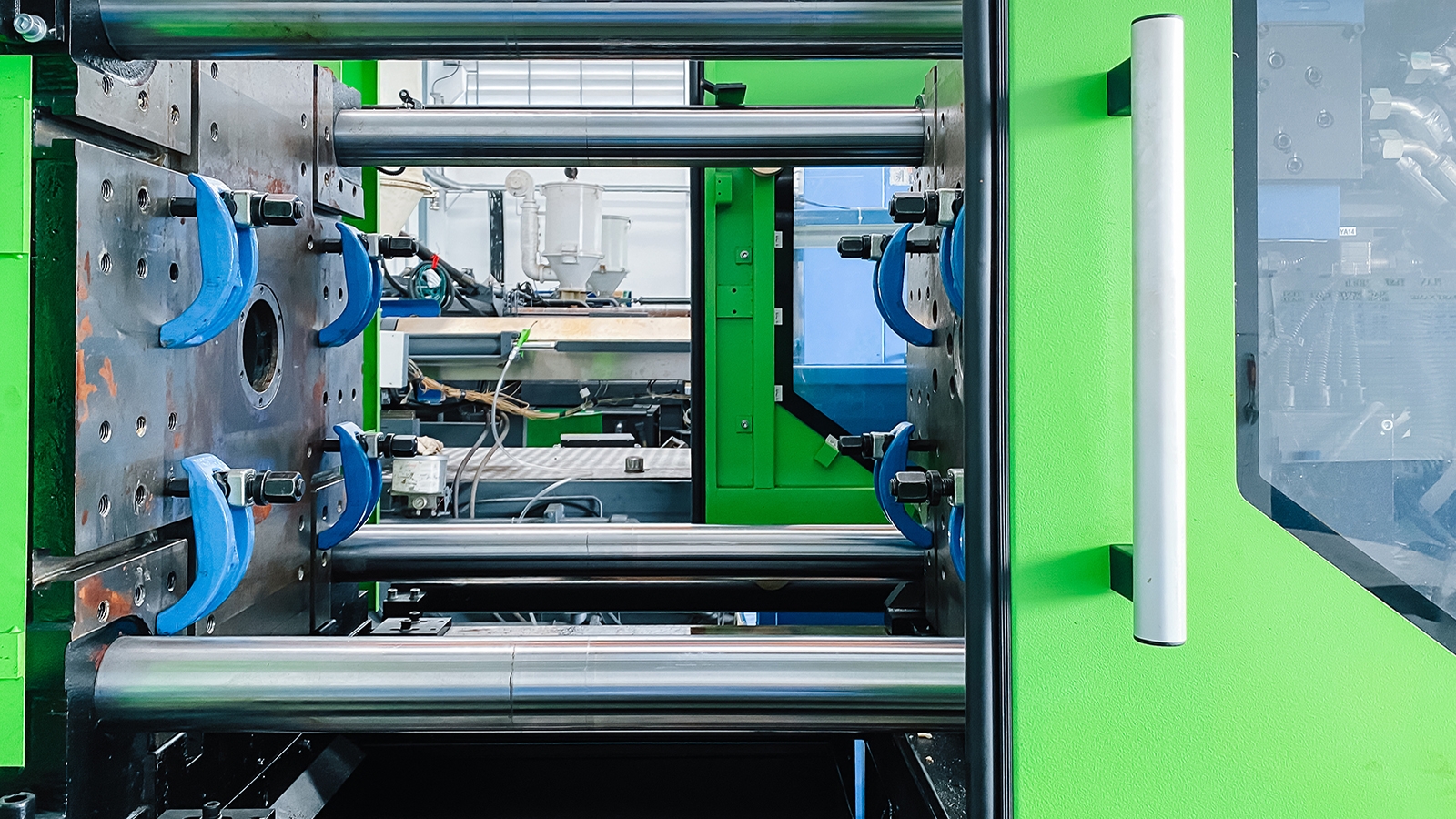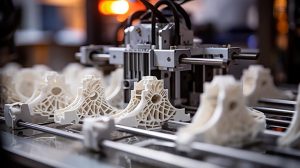Contents
ToggleIn today’s fast-paced manufacturing landscape, businesses are presented with a wide array of technologies to choose from when it comes to producing custom parts and prototypes. Two of the most popular methods are injection molding and 3D printing. Both technologies have their advantages, but which one is the right choice for a particular application depends on factors such as production volume, part complexity, material requirements, and cost. In this article, we’ll explore both technologies in detail and compare them across various criteria, helping manufacturers and engineers make an informed decision about which method best suits their needs.
1. Understanding Injection Molding
Injection molding is a high-efficiency manufacturing process for mass-producing parts. Molten material (typically plastic) is injected into a custom mold under high pressure. After cooling and solidifying, the part is ejected. This method is widely used for automotive components, consumer electronics, medical devices, and packaging.
Key Features of Injection Molding:
- High-Volume Production: Injection molding is ideal for producing large quantities of identical parts quickly and cost-effectively. Once the mold is created, parts can be produced rapidly, with cycle times typically ranging from a few seconds to a few minutes per part.
- Precision and Consistency: Injection molding offers high precision and consistency, making it ideal for producing parts with tight tolerances and complex geometries. The molds are designed to ensure uniformity across every part produced.
- Material Variety: A wide range of materials can be used in injection molding, including various types of plastics, rubber, and even some metals. The ability to select specific materials based on strength, flexibility, heat resistance, and other properties is one of the major advantages of injection molding.
- Cost-Effective at Scale: While the initial cost of creating an injection mold can be high, the per-unit cost decreases significantly as production volume increases. This makes it a very cost-effective solution for mass production.
Limitations:
- High Initial Setup Costs: The creation of molds for injection molding is expensive and time-consuming. Designing and machining molds for complex parts can take weeks or even months, making it a less viable option for small production runs or prototypes.
- Design Rigidity: Once the mold is made, it’s difficult and expensive to change the design. Any design alterations may require a new mold, resulting in additional costs and delays.
- Material Constraints: While there is a broad selection of materials, injection molding may not be suitable for certain specialized materials or those with very specific requirements, such as certain metals or composites.
2. Understanding 3D Printing
3D printing, also known as additive manufacturing, is a process where material is deposited layer by layer to build a three-dimensional object directly from a digital model. Unlike injection molding, 3D printing does not require molds, making it a highly flexible and accessible manufacturing method. There are several types of 3D printing technologies, including Fused Deposition Modeling (FDM), Selective Laser Sintering (SLS), and Stereolithography (SLA).
Key Features of 3D Printing:
- Rapid Prototyping: One of the biggest advantages of 3D printing is its ability to quickly produce prototypes, allowing engineers to test and iterate designs before committing to full-scale production. This is ideal for research and development (R&D) or projects that require frequent changes to the design.
- Design Freedom: 3D printing offers unmatched design freedom, enabling the production of highly complex and intricate geometries that would be difficult, if not impossible, to achieve with traditional manufacturing methods. This is particularly beneficial for industries such as aerospace, medical devices, and consumer products.
- Low Initial Costs: Unlike injection molding, there are no mold creation or tooling costs in 3D printing. This makes it an affordable option for low-volume production and prototyping, especially when working with custom or small batch parts.
- Material Flexibility: 3D printing can use a wide variety of materials, including plastics, metals, ceramics, and composites. It’s particularly useful for creating parts in materials that are difficult or expensive to mold traditionally.
Limitations:
- Slower Production Speed: While 3D printing can produce parts quickly, it is typically slower than injection molding for high-volume production. Printing time can range from hours to days, depending on the size and complexity of the part.
- Lower Surface Quality: Parts produced through 3D printing often have visible layer lines and may require post-processing (such as sanding or polishing) to achieve a smooth surface finish. This may not be suitable for applications where a high-quality surface finish is required.
- Material Strength and Durability: While advancements have been made in 3D printing materials, some 3D-printed parts still lack the strength and durability of injection-molded parts, especially for high-stress applications. However, this is improving with the development of stronger materials and more advanced 3D printing technologies.
- Limited for Mass Production: While 3D printing is a great solution for prototypes and low-volume production, it is not yet a viable option for mass production in many industries due to its slower production speed and higher per-part cost compared to injection molding.
Injection Molding vs. 3D Printing: A Detailed Comparison
Now that we have a basic understanding of both technologies, let’s compare them across various factors that are critical when choosing between injection molding and 3D printing.
Factor | Injection Molding | 3D Printing |
Cost | High upfront costs due to mold creation, but cost-effective at scale. | Low upfront costs, especially for low-volume runs. Higher cost per part for larger quantities. |
Production Volume | Best suited for high-volume production (thousands to millions of parts). | Ideal for low-volume production and prototyping (1-1000 parts). |
Lead Time | Longer due to mold creation and setup (typically weeks or months). | Faster lead time, especially for prototyping (hours to days). |
Material Options | Wide range of plastics, rubber, and some metals. | Wide range of plastics, metals, and composites, but material options still expanding. |
Part Complexity | Ideal for high-precision parts with relatively simple geometries. | Can handle highly complex, intricate designs with ease. |
Surface Finish | High-quality surface finish, especially for molded parts. | May require post-processing for a smooth finish, especially for complex geometries. |
Design Flexibility | Limited flexibility once the mold is created. | Highly flexible, with the ability to modify designs quickly and easily. |
Production Speed | Fast once the mold is created, ideal for large volumes. | Slower production time, particularly for large parts or high volumes. |
Material Strength | Excellent strength and durability for most materials. | Varies by material; some 3D-printed parts may lack the strength of injection-molded parts. |
Post-Processing | Minimal post-processing required. | Often requires significant post-processing, including support removal, sanding, or polishing. |
When to Choose Injection Molding
- Large Production Runs: If your project requires thousands or millions of identical parts, injection molding is the most cost-effective and efficient method.
- High Precision and Consistency: For parts that require tight tolerances and consistent quality, injection molding is the go-to choice.
- Well-Defined Materials: If you need parts made from specific, well-established materials with known properties, injection molding offers a broader range of options.
When to Choose 3D Printing
- Prototyping and Design Iteration:When you need to rapidly produce prototypes for testing and refinement, 3D printing is the ideal choice.
- Complex Geometries: For highly intricate designs that cannot be achieved with traditional manufacturing, 3D printing offers unparalleled design freedom.
- Low-Volume and Custom Parts: If your production run is small or requires customization, 3D printing allows for flexible and cost-effective manufacturing.
Conclusion
Both injection molding and 3D printing offer unique advantages depending on your specific needs. Injection molding is best for high-volume, precision-driven manufacturing, while 3D printing excels in prototyping, customization, and producing complex geometries. For manufacturers looking to optimize their production processes, understanding the strengths and weaknesses of each technology is key.
At RAPIDMFG, we offer both injection molding and 3D printing services, allowing our clients to choose the best solution for their manufacturing needs. Whether you’re looking to create high-volume parts or rapid prototypes, we are committed to helping you bring your designs to life with quality and efficiency.


